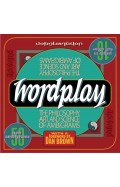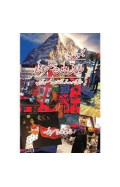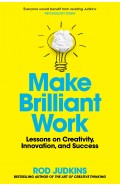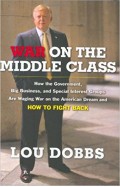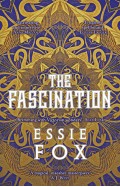Sadequain and the Culture of Enlightenment
By: Akbar Naqvi
-
Rs 1,487.50
- Rs 1,750.00
- 15%
You save Rs 262.50.
Due to constant currency fluctuation, prices are subject to change with or without notice.
| Book | |
| What's in the Box? | 1 x Sadequain and the Culture of Enlightenment |
Sadequain and the Culture of Enlightenment
By: Akbar Naqvi
Rs 1,487.50 Rs 1,750.00 Ex Tax :Rs 1,487.50
Zubin Mehta: A Musical Journey (An Authorized Biography)
By: VOID - Bakhtiar K. Dadabhoy
Rs 892.50 Rs 1,050.00 Ex Tax :Rs 892.50
The Legend of Sadequain: Renaissance of Calligraphic Art
By: Dr salman ahmad
Rs 16,200.00 Rs 18,000.00 Ex Tax :Rs 16,200.00
The Origins of Political Order From Prehuman Times to the French RevolutioN
By: Francis Fukuyama
Rs 4,045.50 Rs 4,495.00 Ex Tax :Rs 4,045.50
The Legend of Sadequain: Renaissance of Calligraphic Art
By: Dr salman ahmad
Rs 16,200.00 Rs 18,000.00 Ex Tax :Rs 16,200.00
Wordplay: The Philosophy, Art, and Science of Ambigrams
By: John Langdon
Rs 1,015.75 Rs 1,195.00 Ex Tax :Rs 1,015.75
Operation Dark Heart: Spycraft And Special Ops On The Frontlines Of Afghanistan And The Path To Victory
By: Anthony Shaffer
Rs 1,697.50 Rs 3,395.00 Ex Tax :Rs 1,697.50
Eureka! - Mindblowing Science Every Day of the Year
By: New Scientist
Rs 2,035.75 Rs 2,395.00 Ex Tax :Rs 2,035.75
Marvel Avengers - Ultimate Guide Updated New Edition
By: DK
Rs 3,775.50 Rs 4,195.00 Ex Tax :Rs 3,775.50
Make Brilliant Work - From Frida Kahlo to Steve Jobs, How to Unlock Your Creativity
By: Rod Judkins
Rs 1,865.75 Rs 2,195.00 Ex Tax :Rs 1,865.75
Albert Einstein (72) (Little People, BIG DREAMS)
By: Maria Isabel Sanchez Vegara
Rs 2,515.50 Rs 2,795.00 Ex Tax :Rs 2,515.50
Stupendous and Tremendous Science: Happy and Healthy Human Body
By: Claudia Martin
Rs 1,355.75 Rs 1,595.00 Ex Tax :Rs 1,355.75
War on the Middle Class: How the Government, Big Business, and Special Interest Groups Are Waging War on the American Dream and How to Fight Back
By: Lou Dobbs
Rs 1,848.75 Rs 2,175.00 Ex Tax :Rs 1,848.75
Superpowered Plants - Meet the Smartest, Strongest, and Sneakiest Plants
By: Soledad Romero Mariño
Rs 6,795.00 Ex Tax :Rs 6,795.00
Sir Gawain and the Green Knight (Collins Classics)
By: Jessie Weston
Rs 625.50 Rs 695.00 Ex Tax :Rs 625.50
The Price of Time - The Real Story of Interest
By: Edward Chancellor
Rs 2,965.50 Rs 3,295.00 Ex Tax :Rs 2,965.50
The Glitter Plan How We Started Juicy Couture for $200 and Turned It Into a Global Brand
By: Pamela Skaist-Levy
Rs 2,290.75 Rs 2,695.00 Ex Tax :Rs 2,290.75
Speaking in Thumbs - A Psychiatrist Decodes Your Dating Texts So You Don't Have To
By: Dr Mimi Winsberg
Rs 2,097.50 Rs 4,195.00 Ex Tax :Rs 2,097.50
Discover Your Spouse – The Book of 100 Questions
By: Rana Rais Khan
Rs 926.50 Rs 1,090.00 Ex Tax :Rs 926.50
The Undoing Project: A Friendship that Changed the World
By: Michael Lewis
Rs 2,515.50 Rs 2,795.00 Ex Tax :Rs 2,515.50
Summers Under the Tamarind Tree Recipes and memories from Pakistan
By: Sumayya Usmani
Rs 2,876.00 Rs 3,595.00 Ex Tax :Rs 2,876.00
Life Lessons: Wisdom and Wit from Life's Ups and Downs
By: Jay Blades
Rs 3,225.75 Rs 3,795.00 Ex Tax :Rs 3,225.75
The Mercurial Mr Bhutto And Other Stories
By: Maheen Usmani
Rs 2,715.75 Rs 3,195.00 Ex Tax :Rs 2,715.75
Breathwork - Use the Power of Breath to Energize Your Body and Focus Your Mind
By: Nathalia Westmacott-Brown
Rs 2,155.50 Rs 2,395.00 Ex Tax :Rs 2,155.50
The Government of No One: The Theory and Practice of Anarchism
By: Ruth Kinna
Rs 2,515.50 Rs 2,795.00 Ex Tax :Rs 2,515.50
Louise Hay's Affirmations for a Stress-Free Life A 12-Card Deck for Greater Calm, Balance, and Ease
By: Louise Hay
Rs 1,705.50 Rs 1,895.00 Ex Tax :Rs 1,705.50
Microcredit Programme of OPP-Orangi Charitable Trust Hardcover – 1 Jan. 2006
By: Aquila Ismail
Rs 632.00 Rs 1,580.00 Ex Tax :Rs 632.00
Zubin Mehta: A Musical Journey (An Authorized Biography)
By: VOID - Bakhtiar K. Dadabhoy
Rs 892.50 Rs 1,050.00 Ex Tax :Rs 892.50
Sadequain and the Culture of Enlightenment
By: Akbar Naqvi
Rs 1,487.50 Rs 1,750.00 Ex Tax :Rs 1,487.50
The Legend of Sadequain: Renaissance of Calligraphic Art
By: Dr salman ahmad
Rs 16,200.00 Rs 18,000.00 Ex Tax :Rs 16,200.00














-120x187.jpg?q6)












-120x187.jpg?q6)
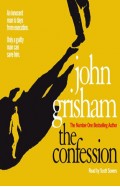

-120x187.jpg?q6)



